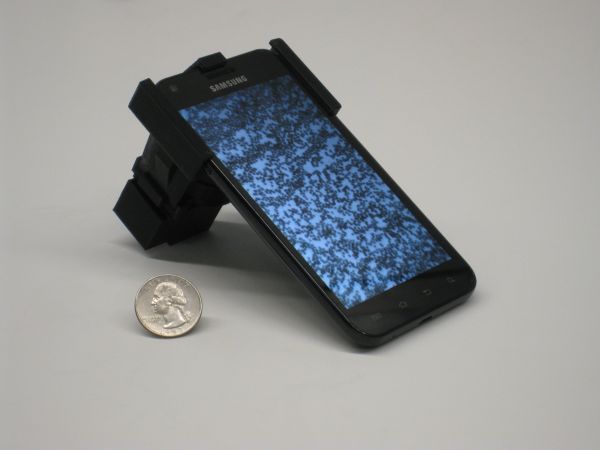Smart-phone based computational microscopy using multi-frame contact imaging on a fiber-optic array published in Lab on a Chip (2013)
By I. Navruz ,

We demonstrate a cellphone based contact microscopy platform, termed Contact Scope, which can image highly dense or connected samples in transmission mode. Weighing approximately 76 grams, this portable and compact microscope is installed on the existing camera unit of a cellphone using an opto-mechanical add-on, where planar samples of interest are placed in contact with the top facet of a tapered fiber-optic array. This glass-based tapered fiber array has y9 fold higher density of fiber optic cables on its top facet compared to the bottom one and is illuminated by an incoherent light source, e.g., a simple light-emittingdiode (LED). The transmitted light pattern through the object is then sampled by this array of fiber optic cables, delivering a transmission image of the sample onto the other side of the taper, with y36 magnification in each direction. This magnified image of the object, located at the bottom facet of the fiber array, is then projected onto the CMOS image sensor of the cellphone using two lenses. While keeping the sample and the cellphone camera at a fixed position, the fiber-optic array is then manually rotated with discrete angular increments of e.g., 1–2 degrees. At each angular position of the fiber-optic array, contact images are captured using the cellphone camera, creating a sequence of transmission images for the same sample. These multi-frame images are digitally fused together based on a shift-andadd algorithm through a custom-developed Android application running on the smart-phone, providing the final microscopic image of the sample, visualized through the screen of the phone. This final computation step improves the resolution and also removes spatial artefacts that arise due to non-uniform sampling of the transmission intensity at the fiber optic array surface. We validated the performance of this cellphone based Contact Scope by imaging resolution test charts and blood smears.